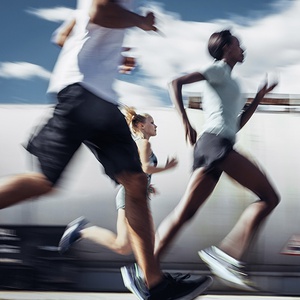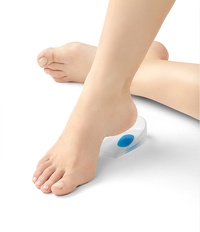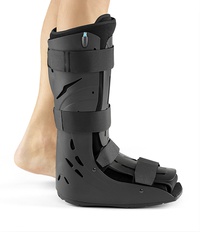Achilles Tendon Inflammation
Below you will find explanations regarding the causes, symptoms, and treatment options for achilles tendon inflammation (achilles tendonitis).
Causes
What exactly causes irritation or inflammation of the achilles tendon? Achillodynia is an umbrella term for various painful syndromes related to the achilles tendon. These can range from minor injuries to irritation to inflammation depending on the severity of the pain.
The causes of achillodynia can vary, with male athletes between the ages of 35 and 45-years-old being the most affected. Among the triggers for achillodynia are:
- Worn out footwear
- An abrupt and sudden strain on the legs, such as while sprinting and jumping
- Running on hard or uneven ground
- Permanent shortening of the calf muscles
- Medications such as corticosteroids
- Conditions related to the joints, such as rheumatism
- Being overweight
- Previous injury to the tendons or ligaments
- Deviation in the ankle joints (flat feet or splay feet, for example)
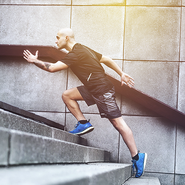
Symptoms
Pain in the achilles tendon initially occurs when there is pressure on it. If the condition progresses, this can lead to pain even when resting. However, it is especially sensitive if/when pressure is exerted on the tendon while irritation or inflammation is present. External symptoms include swelling, redness, and overheating of the skin surrounding the achilles tendon. In some instances, sufferers find that they can occasionally even hear a crunch while walking or running.
Diagnosis
In order to determine achillodynia, a doctor manually examines the lower area of the achilles tendon. Patients with achillodynia will experience pain when pressure is placed on the inflamed area. In many cases, the achilles tendon is also noticeably swollen. Imaging techniques such as ultrasound may be used to differentiate tendon disorders and to make a diagnosis.
Prevention
No tendon in the human body is stronger than the achilles tendon. However, irritation of this tendon is always due to excessive loads, hence why athletes are commonly affected. The risk of developing this condition is higher than average among runners and athletes playing ball sports such as football, basketball, handball, and squash.
Correct footwear and correct running technique are essential for prevention. Doing an extensive warm-up and stretching the calf muscles before taking part in any sport will also prevent discomfort in the achilles tendon. A simple exercise that can be done each day is calf raises on a step or stairway. This is when you stand on a step on your toes and lower your heels to below the level of the step. It is recommended that 30 calf raises are done each day.

Conservative Therapy
In up to 80% of cases, physical therapy without surgery is successful when treating achillodynia. Anti-inflammatory ointments and drugs can help with acute pain, as can applying a cold compress to the affected area. Orthopaedic insoles and orthoses also provide relief, alongside taking a break from sporting activity. Pain in the heels and achilles tendon can also be effectively treated through stretching and strengthening exercises in physiotherapy as well as with massages to encourage circulation.
Surgery and aftercare
Surgery is only an option when the achillodynia sees no improvement over 3 to 6 months of conservative therapy. Surgery consists of either removing the inflamed tissue or splitting the tendinous skin to provide relief to the achilles tendon.
Following surgery, there must be no pressure whatsoever on the foot for 4 to 8 weeks. A lower leg and foot orthosis can be helpful during this period. Physiotherapy with stretching, mobilising, and strengthening exercises then follow.
Special cases of Haglund's Deformity
The so-called 'haglund's deformity' is also a possible cause of achillodynia. This refers to a protrusion of the heel bone (calcaneal tuber) or, more specifically, of the bone edge at the end of the heel bone. This abnormality can lead to irritation or inflammation of the achilles tendon and the underlying synovial bursae (i.e. the sacs of fluid between the tendons/muscles and the bone). This bump (protrusion of the heel bone) in the case of haglund's deformity is diagnosed using an X-ray or MRI scanner. Treatment is initially conservative with the help of insoles and physiotherapy. If this is not successful, the protrusion can then be removed with a minimally invasive procedure.
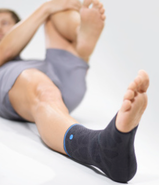
More information

